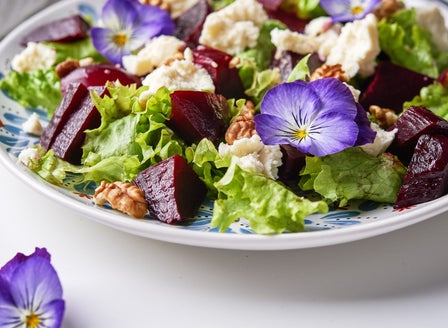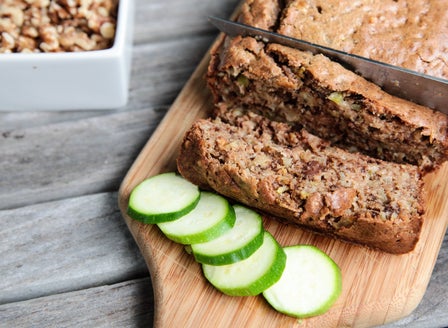“One zucchini plant will feed an entire family, two plants will ensure leftovers for additional family and friends and three plants will cover your street” ~ old proverb. Weather you call it Zucchini or Courgette, it is a must have in the summer garden. Zucchini is very versatile and is used in many different cuisines. Spiralize it into pasta, grill it, turn it into a cake or a fritter, or you can even eat the flower.
Planting Calendar
September-February
Prepare
Position
Being subtropical Zucchini are best planted in a sunny position with warm temperatures and lots of direct sun and space to grow.
Soil
When planted into the ground Zucchini likes a free draining soil that is rich in organic matter. To improve the organic content in your soil, break up the soil and add Kings Compost or for an organic option use Living Earth Organic Vegetable Mix and Kings Sheep Pellets then mix together well. When growing in containers, plant into Kings Container mix. This mix contains added water storage crystals and Saturaid, two products that help maintain moisture in the soil.
Pollination
Zucchini plants are monoecious, that is they have separate male and female flowers. Male flowers appear first followed by the female flowers which turn into zucchinis (the flowers with a fatter stem). Pollen is transferred from male to female flowers by bees and other insects. Encourage bees to your garden with extra bee-friendly plants, like lavender and borage, to get better pollination. The female flower is a golden blossom on the end of each emergent zucchini. The male flower grows directly on the stem of the zucchini plant in the leaf axils, on a long stalk, and is slightly smaller than the female.
Care
Watering
Water slowly allowing the water to sink down into the roots, rather than allowing it to run off the top of the soils surface. Add Saturaid into the soil at planting as this will help channel the water deep down into the root zone. If planted in pots never allow the pot to sit in water. Water your zucchini plants each morning and avoid getting the foliage wet.
Feeding
Once your zucchini has started establishing itself (or after 3-4 weeks of settling into the soil), feed your plant with Aquaticus Organic Garden Booster, an all-purpose natural and organic fertiliser that feeds plants and helps to increase and promote healthy soil. Side dress with Oceanfert at 30 day intervals.
Protecting
Water in the morning and avoid wetting the leaves as this will encourage Powdery Mildew. Both whitefly and aphids have been known as unwelcome visitors on zucchini plants. To prevent their arrival, plant nasturtiums (aphids) and nicotiana (whitefly) around the garden as a sacrificial crop. Plant flowers like alyssum and borage around the garden as these help attract predatory insects that will prey on pest insects
Mulching
Mulch around each zucchini plant with pea and lucerne straw. This will help retain moisture in the soil for longer around the plants and help suppress weeds. Since zucchini fruits are borne closer to the soil, straw helps keep them away from direct contact with soil and prevents rotting
Spraying
Spray for prevention rather than cure by spraying with Kiwicare Organic Super Sulphur for Powdery Mildew. If treatment is necessary for insects, keep it natural by spraying leaves thoroughly with EnSpray99 oil, an organic broad-spectrum insecticide. If possible, spray in the evening to avoid affecting bees and other beneficial insects.
General Care
When using sprays, chemicals or fertilisers always read the label and follow the instructions. Apply sprays in the evening to avoid harming beneficial insects.
Expert Tip
It is not uncommon for the first few fruit to go yellow and rot off at the end. (Blossom end rot)This is usually due to lack of calcium or inadequate watering. Water well and deeply every third day in dry periods. To add calcium to the soil apply a dressing of Lime 2 weeks prior to planting.
Frequently Asked Questions
Can I still Zucchini when they get big?
Yes, you can still eat Marrows. Though they are less tasty and have harder flesh, they can still be used to bulk up soups, or roasted without the skins. They taste great when stuffed.
The leaves on my Zucchini have all gone white, what is it and how do I fix it?
The white on the top of the leaves is called Powdery Mildew and is very typical when growing Zucchini. When watering try not to get water on the leaves and water in the morning. Spraying for prevention is always better than spraying for cure with Mildew. Spray with Free Flo copper as per the instructions on the label.
Why are the baby Zucchini going brown and falling off?
There are two reasons why this can happen. Firstly poor pollination can cause flower drop. Plants some borage and and other bees loving plants to attract pollinators to the garden. Secondly Blossom End Rot is very common with Zucchini in the early stages of fruit production. Ensure that you are watering deeply and don't allow the soil to dry out. Before planting apply an application of Lime to the soil 4 weeks before planting. Usually the plant rectifies itself and will start to grow good Zucchini.

